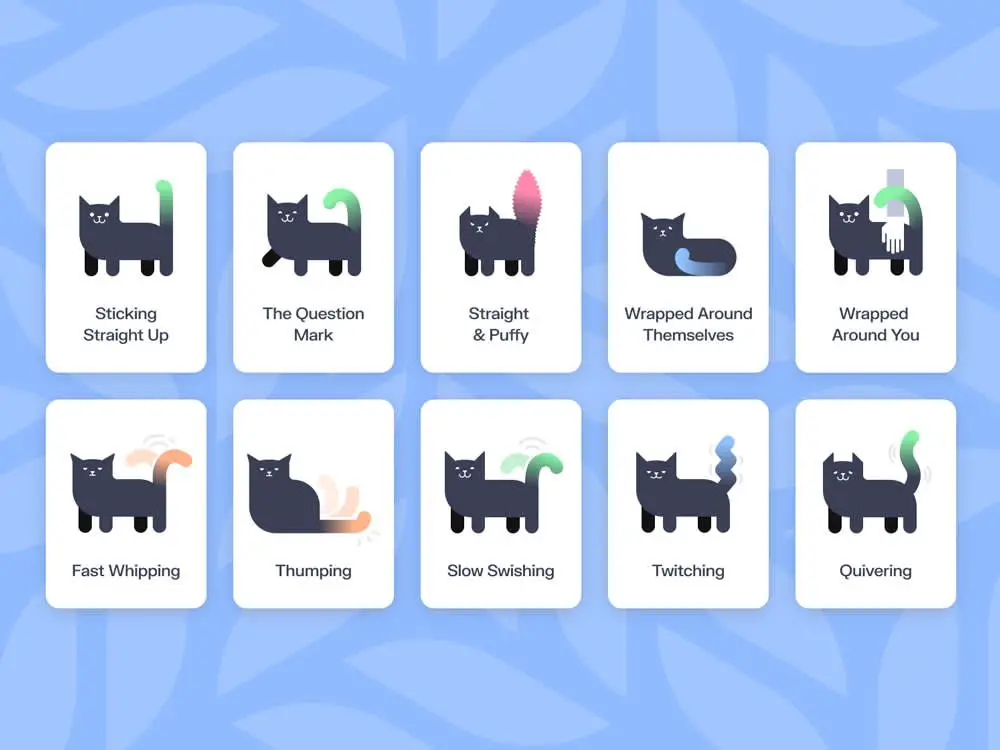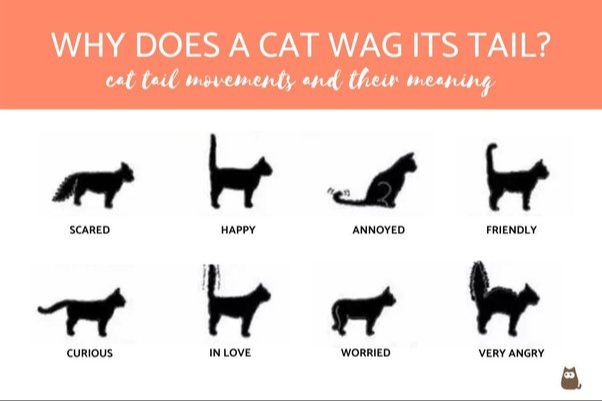What Are Cat Tails?
Cattails, also known as Typha, are upright perennial plants that belong to the family Typhaceae. They grow in dense stands in marshes, wetlands and along freshwater shorelines across the Northern Hemisphere (Britannica).
Cattails have long, thin leaves that are slightly spongy and can grow up to 7-8 feet high. The leaves emerge from the base of a spongy, creeping rhizome system that anchors the plant. At the top of the stalk is a dense, cigar-shaped spike that contains the flowers. This spike is divided into two parts – a thicker staminate (male) part at the top and a slender pistillate (female) part below (Brandeis bio).
Cat Tail Movement

Cat tails are well known for the mesmerizing way their flowers and leaves sway and bend in even the slightest breeze. The long, thin leaves and the dense, fluffy flowers at the top move together like a wave across a field of cat tails. This motion is caused by the wind blowing across the plants and each leaf and flower stalk bending in response.
The leaves and stalks of cat tails are very flexible and can bend and sway easily when wind hits them. Even a light wind of just a few miles per hour is enough to get the leaves and flowers moving. The slim shape of the leaves, the fluffy texture of the flowers, and the height of the stalks make them very susceptible to being pushed by the wind.
As the wind blows, the friction against the leaves and stalks causes them to bend and sway in the direction the wind is blowing. The leaves don’t break because they can flex and bend freely. The movement happens across the plants, making it appear like a wave is travelling through the cat tails. They all move together in a synchronized, fluid motion. Depending on wind speed, they may just gently sway back and forth, or on windy days, bend dramatically in the wind.
The wind-induced movement of cat tails is a beautiful natural phenomenon that captures people’s attention in the outdoors. A field of cat tails swaying in unison demonstrates the delicate dance that plants do with the winds that blow past them. Their flexible, lightweight structures allow them to gracefully move along with the wind.
Mechanism Behind Movement

A cat’s tail is composed of between 19-23 highly mobile, articulated vertebrae that connect to form the tail. These vertebrae are separated by connective tissue that allows flexibility and a large range of motion. At the base of the tail are strong muscles that control the movement of the tail by contracting and relaxing to swing the tail side to side or up and down.
Cats have a fair amount of voluntary control over their tail movements through these muscles and can move their tails in complex patterns to express a range of emotions and intentions. According to PetMD, most day-to-day tail motion falls under voluntary control. This allows cats to use tail gestures as an important form of non-verbal communication.
However, cats do not have complete voluntary control. Some tail motion can happen involuntarily as a response to stimuli or internal states. For example, when a cat sees prey or is startled, the tail may instinctively puff up. So while cats can consciously control tail movement to a large degree, they cannot entirely stop certain reflexive motions.
Purpose of Movement

Cat tails evolved to move in the wind as a way to disperse their seeds. The fluffy, hairy strands that make up the “tail” of the cattail are actually the male flowers of the plant. When they mature and dry out, they break off the main stem and are carried by the wind, allowing their tiny seeds to spread over long distances (Cattails, 2019) . The movement in the wind helps shake loose the flower strands so they can detach and disperse more easily.
In addition, the slender shape and flexibility of the flower spike allows it to bend and sway gracefully in windy conditions without breaking. This ability to move with the wind prevents the flower spike from being damaged and enables the plant to continue flowering and seeding throughout the season. The dynamic movement is a sign of health and vitality, ensuring maximum seed dispersal.
Other Plants That Move
Cat tails are not the only plants that move and sway in response to touch and wind. Many plants have evolved specialized cells and structures to facilitate motion.
Some examples of other plants that move include:
Butterfly bushes (Buddleja species) have flexible stems that move readily in the wind. Their flowers tend to sway and nod up and down (Source 1).
Weeping cypress trees like Chamaecyparis nootkatensis ‘Pendula’ have cascading branches that blow gracefully in the breeze (Source 1).
Dwarf Arctic willow (Salix purpurea ‘Nana’) has slender stems that dance and tremble when blown by the wind (Source 1).
Many grasses and cereal crops like wheat and barley have long, thin leaves that flutter and sway readily in response to wind patterns (Source 2).
Movement Speed and Patterns

A cat’s tail can move at varying speeds and in different patterns depending on the cat’s emotional state. When a cat is relaxed or content, the tail often swishes gently from side to side at a leisurely pace. This slow, sweeping movement is thought to indicate a calm, happy mood (source 1).
In contrast, faster, jerky motions of the tail demonstrate excitement or agitation. Small, rapid movements may occur when a cat is intently watching potential prey or toys during playtime. A bristled, whipping tail can signal fear or aggression (source 2).
Cats also exhibit particular tail motions while hunting. The tail may twitch or shudder as the cat stalks its target. Then the tail puffs up before the cat pounces, helping maintain balance and acting as a rudder to change direction mid-air (source 3).
Overall, a cat’s tail movement ranges from slow and fluid to rapid and choppy. The speed and flow of motion provides insight into a cat’s internal state and intentions.
Influence of Weather
The weather and temperature can significantly impact how a cat’s tail moves. In cold weather, cats will fluff up their fur and tail to trap body heat. Their tails may tuck in close to their body for warmth. According to Cold Tail Syndrome, cats eat more in cold weather to generate additional body heat.
In hot weather, cats will shed their winter coats and their tails may be more active to facilitate cooling. Cats may hold their tails up off hot surfaces to avoid burning their skin. Their tails can also help with temperature regulation. According to National Geographic, cats sweat through their paw pads and their tails help spread that sweat over their coat to increase evaporative cooling.
Both cold and hot weather can impact tail movement and position. Cats will adjust their tails to regulate body temperature and minimize exposure to extreme ambient temperatures. The speed, height, fur fluffing, and posture of a cat’s tail provides insight into how they are responding to the weather.
Cat Tail Movement in Water
A cat’s tail continues to move and sway even when the cat is in water. The tail moves fluidly from side to side, often in a smooth, wave-like motion. This allows the tail to propel the cat through the water as it swims. The tail acts as a rudder and counterbalance, helping the cat steer and maintain stability in the water.
Even when a cat is simply sitting or lying in shallow water, its tail will still gently sway back and forth. This constant motion is due to the flexible vertebrae in the tail that allow it to bend. The muscles in the tail contract to move the tail side to side 1. It helps the cat maintain its balance and equilibrium while floating in water.
The tip of the tail often flicks up and down when a cat is in water. This shows that the cat is focused and alert, keeping track of movements and stimuli in the unfamiliar aquatic environment 2. Overall, the constant motion of a cat’s tail in water is an instinctual behavior for balance and sensory awareness.
Cultural Significance
Cat tails have had important symbolism and meaning in many cultures throughout history. In ancient Egypt, cats were revered and cat tails were seen as a symbol of divinity and balance. Bastet, the cat-headed Egyptian goddess, was often depicted holding a cat tail scepter.
In Celtic folklore, the cat was seen as a guardian spirit. Finding a cat tail on your doorstep was considered good luck, as it meant the cat was protecting your home. Cat tails were sometimes hung over doorways as talismans to ward off evil spirits.
In some Native American tribes, cat tail plants were used to make ceremonial rattles and jewelry. Braided cat tails represented unity and balance. In Cherokee myths, the cat tail was a gift from the divine which enabled humans to craft items from its parts.
Today, cat tails remain an important symbol of luck, protection, and spiritual connection with animals. Many cultures continue to revere the agility and mysticism of the cat through artistic depictions of their elegantly waving tails. For more on the cultural significance of cat tails, refer to this informative article on Your House Pet (https://www.yourhousepet.com/why-do-cats-have-tails/).
Other Interesting Facts
Cats use their tails to aid in balance and help stabilize themselves when jumping or climbing. A cat that falls will often reflexively twist themselves mid-air and land on their feet thanks in part to adjustments made with their tail to control angular momentum (1).
The Manx cat breed originated on the Isle of Man and is known for usually having no tail due to a genetic mutation. Kittens born without this mutation often do not survive, so the breed was naturally selected for lacking tails (2).
In addition to balance, cats use their tails to communicate a variety of emotions and intentions through movement patterns and positioning. For example, an upright tail can signal happiness and greeting, while a puffed tail signals fear or aggression (1).
Some cats can have tails nearly as long as their body length. The American Curl breed is known for exceptionally long tails that sometimes grow to over a foot in length and curl at the end (2).
An injured or traumatized tail may fail to heal properly. In some cases amputation is necessary if blood flow is cut off. Cats can live normal lives without tails but may need to make some adjustments to balance (1).

